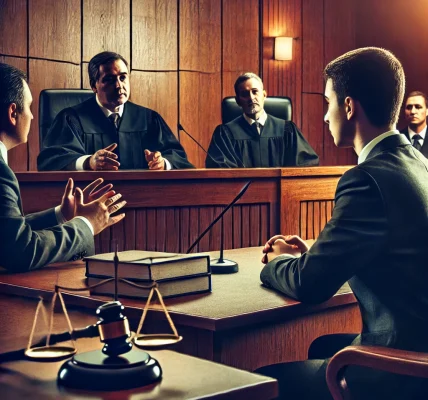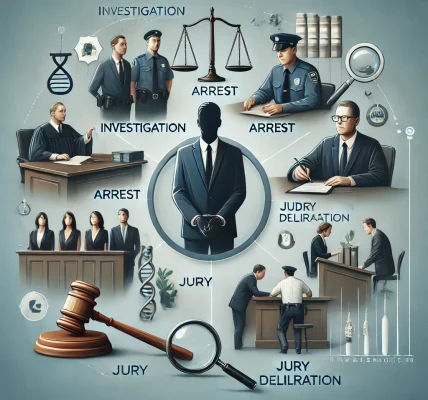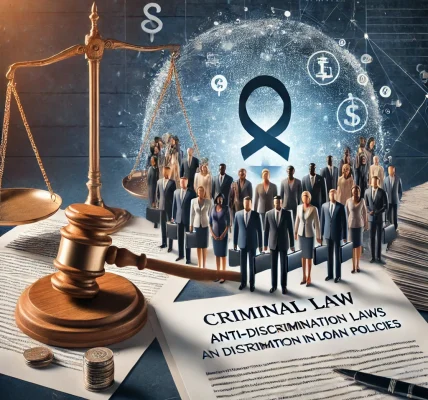When a person is charged with a crime, they have the right to defend themselves in court. Criminal defenses are legal strategies used by defendants to challenge the accusations against them. These defenses can be based on different factors such as lack of intent, self-defense, or procedural errors by law enforcement. Understanding the various types of criminal defenses can help individuals know their rights and how the legal system works.
1. Affirmative Defenses
An affirmative defense acknowledges that the crime may have occurred but argues that the defendant had a justifiable reason for their actions. Some common affirmative defenses include:
a) Self-Defense
- Used in cases involving assault, battery, or even homicide.
- The defendant must prove that they acted to protect themselves from immediate harm.
- The level of force used must be proportional to the threat faced.
b) Defense of Others
- Similar to self-defense, but applied when protecting another person from harm.
- The force used must be reasonable and necessary to prevent injury.
c) Defense of Property
- Used when a defendant takes action to protect their home, belongings, or land.
- The use of force must be reasonable and not excessive.
- Some states have “Stand Your Ground” or “Castle Doctrine” laws that provide stronger protections for this defense.
d) Consent
- Used in cases where the alleged victim agreed to the defendant’s actions.
- Common in cases of assault, theft, or fraud, where the defendant argues that the victim voluntarily participated.
2. Lack of Criminal Intent
For many crimes, intent (mens rea) is a crucial element. If a defendant can prove they lacked intent, they may avoid conviction.
a) Mistake of Fact
- The defendant misunderstood a fact that led to the crime.
- Example: Taking someone else’s bag by accident, believing it was their own.
b) Lack of Knowledge
- The defendant was unaware that they were committing a crime.
- Example: Being unknowingly in possession of stolen goods.
c) Entrapment
- Occurs when law enforcement officers persuade or coerce someone into committing a crime they would not have committed otherwise.
- The defendant must prove that they were pressured into illegal activity by authorities.
3. Mental State Defenses
A defendant may argue that their mental state at the time of the crime should exempt them from legal responsibility.
a) Insanity Defense
- Claims that the defendant was not mentally capable of understanding their actions or distinguishing right from wrong.
- Different legal tests apply in various states to determine insanity.
b) Diminished Capacity
- Unlike the insanity defense, diminished capacity argues that the defendant’s mental state reduced their ability to form criminal intent.
- Often used to reduce charges (e.g., from first-degree murder to manslaughter).
c) Intoxication
- Voluntary intoxication is rarely a valid defense but may be used to challenge intent.
- Involuntary intoxication (being drugged without consent) may be a stronger defense if it led to a lack of control or understanding.
4. Alibi Defense
- The defendant presents evidence proving they were elsewhere when the crime occurred.
- Alibis can include witness testimony, video footage, or receipts showing the defendant’s location at the time of the crime.
5. Procedural Defenses
These defenses focus on errors made by law enforcement or the prosecution that violated the defendant’s rights.
a) Violation of Constitutional Rights
- If police obtained evidence illegally (e.g., without a warrant), it may be excluded from trial under the Fourth Amendment.
- If the defendant was not read their Miranda rights, their statements to police may be inadmissible.
b) Double Jeopardy
- The Fifth Amendment prevents a person from being tried twice for the same crime.
- If a case has already been resolved, the prosecution cannot pursue the same charges again.
c) Statute of Limitations
- Every crime has a time limit within which charges must be filed.
- If the time period has expired, the case may be dismissed.
How Criminal Defenses Work in Court
Each defense strategy involves presenting evidence, questioning witnesses, and making legal arguments. The burden of proof usually lies with the prosecution, but some defenses require the defendant to provide sufficient evidence to support their claim.
Step 1: Filing Motions
- Before trial, defense attorneys may file motions to dismiss charges, suppress evidence, or request a change of venue.
Step 2: Presenting Evidence
- The defense team collects documents, witness statements, and expert testimony to support their case.
Step 3: Cross-Examination
- The defense has the right to question prosecution witnesses to challenge their credibility and the evidence presented.
Step 4: Closing Arguments & Verdict
- Both sides present their final arguments, summarizing the case.
- The judge or jury then decides on a verdict based on the evidence and arguments presented.
Conclusion
Understanding criminal defenses is essential for anyone facing charges or interested in the legal system. Various strategies, such as self-defense, lack of intent, or procedural errors, can help defendants challenge accusations in court. Legal representation is crucial to ensuring that the best defense strategy is applied in each case.



